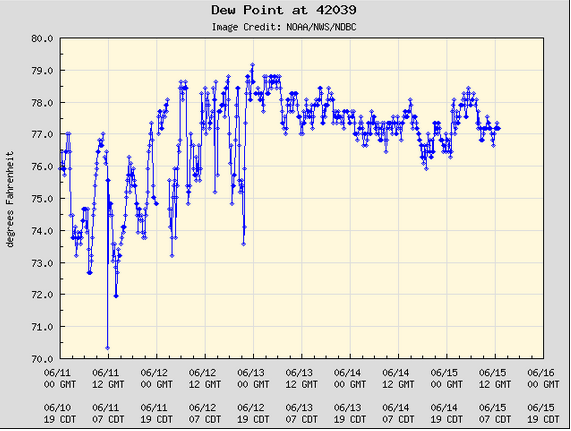Former Hurricane Beryl is bringing rain and thunderstorms to parts of the central U.S. on Tuesday. Beryl weakened to a tropical depression on Monday night as it moved farther inland. At 11:00 a.m. EDT on Tuesday the center of Tropical Depression Beryl was located at latitude 35.8°N and longitude 91.2°W which put the center about 35 miles (55 km) west-southwest of Jonesboro, Arkansas. Beryl was moving toward the northeast at 25 m.p.h. (40 km/h). The maximum sustained wind speed was 30 m.p.h. (50 km/h) and there were wind gusts to 40 m.p.h. (65 km/h). The minimum surface pressure was 1004 mb.
A day after Hurricane Beryl hit the coast of Texas and caused over 2.5 million customers to lose electricity, Beryl is bringing rain and thunderstorms to parts of the central U.S. The center of the surface circulation of former Hurricane Beryl is located over northeastern Arkansas. Thunderstorms are starting to form in bands over Alabama, western Tennessee and western Kentucky. Steady light to moderate rain is falling over Missouri, central Illinois and central Indiana.
An upper level trough over the central U.S. will steer Tropical Depression Beryl toward the northeast during the next 24 hours. On its anticipated track the center of Beryl’s circulation will move from northeastern Arkansas to northern Indiana.
Tropical Depression Beryl will drop heavy rain over parts of the Middle Mississippi River Valley and Lower Great Lakes. The heaviest rain is likely to fall in southeastern Missouri, central and eastern Illinois, northwestern Indiana and southern Michigan.
Flood Watches are in effect for northern Arkansas, central and southern Missouri, Illinois, far western Kentucky, northern Indiana and southern Michigan.
The circulation around the eastern side of Tropical Depression Beryl could generate enough low level wind shear for rotation in thunderstorms. Some thunderstorms could produce tornadoes. The U.S. National Weather Service Storm Prediction Center (SPC) is indicating an Enhanced Risk of Severe Weather for the area stretching from Cincinnati, Ohio through Louisville, Kentucky to Evansville, Indiana.

 The record dew point temperature of 84 degrees was nearly five degrees higher than any dew point temperature measured by the buoy during the past five days.
The record dew point temperature of 84 degrees was nearly five degrees higher than any dew point temperature measured by the buoy during the past five days.